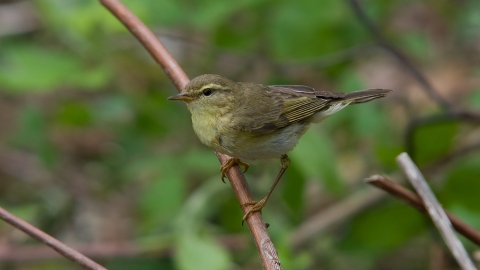
©Bob Coyle
Willow warbler
Scientific name: Phylloscopus trochilus
A summer visitor, the willow warbler can be seen in woodland, parks and gardens across the UK. It arrives here in April and leaves for southern Africa in September.
Species information
Category
Statistics
Length: 11-13cmWingspan: 19cm
Weight: 10g
Average lifespan: 2 years
Conservation status
Classified in the UK as Amber under the Birds of Conservation Concern 5: the Red List for Birds (2021).
